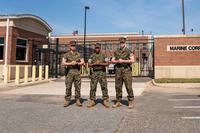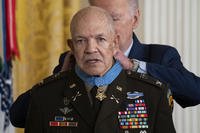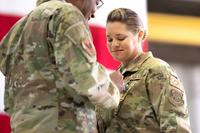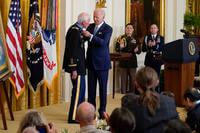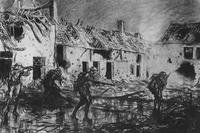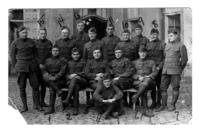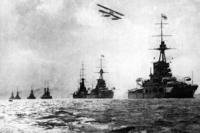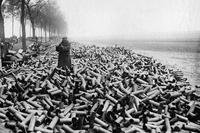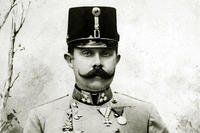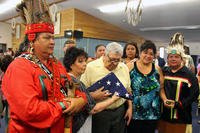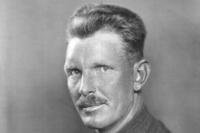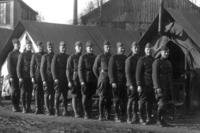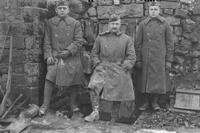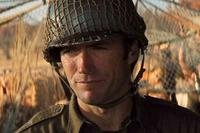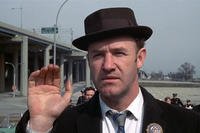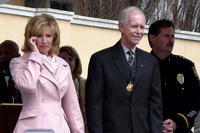History of the U.S. Military
The United States wasn’t always a military superpower. Many wars and battles shaped the military we know today. From the Continental Army led by George Washington to today’s military and the War on Terror, learn about the two centuries of military history that made the United States armed forces what it is today.
The American Revolution
The US Military came about on June 14, 1775, during the American Revolution with our first formal fighting force, the Continental Army. The Revolution was fought from 1775-1783, with George Washington in command. There were many important battles during the revolution that would shape our nation and the military. The war began with “the shot heard round the world” at the Battles of Lexington and Concord. With the conclusion of the war and the Treaty of Paris, the United States of America won its independence from Great Britain.
Important Figures and Events of the American Revolution
- George Washington: The first president of the United States, founding father and commander of the Continental Army. Washington also created the Badge of Military Merit, which is the inspiration for today's Purple Heart.
- Thomas Jefferson: The third president of the United States and founding father who is responsible for writing the Declaration of Independence.
- Benjamin Franklin: One of the founding fathers who played an important role in the creation of the Declaration of Independence and forming an alliance with France. He was also an inventor and responsible for the creation of universities and the modern-day fire department.
- Samuel Adams: One of the founding fathers and governor of Massachusetts, Adams played a critical role in coordinating the American resistance and pushing for independence from Britain.
- Benedict Arnold: Fighting at the Battle of Lexington and Concord, securing Fort Ticonderoga, launching America's first amphibious assault and planning the Battle of Saratoga, Arnold was considered a military genius. With all of his military success, Arnold was labeled a traitor when he began bargaining with the British in 1779.
- Battles of Lexington and Concord: The first battles of the American Revolution between the Minutemen and British on April 19, 1775.
- Siege of Boston: A monthlong battle where the Continental army captured Boston and drove the British out of the city.
- Declaration of Independence: July 4, 1776, marked the official separation of America from Britain.
- Battles of Ticonderoga: Americans captured the fort in 1775, with the British recapturing the fort in 1777.
- Battle of Bunker Hill: The Americans took Bunker Hill and Breed’s Hill as part of the Siege of Boston, but they later lost the hills after several attacks from the British. Although the British won the battle, it came with a loss of many men that greatly weakened their forces.
- Battle of Long Island: The British capture New York, driving Gen. George Washington and his army out of New York to New Jersey.
- Battle of Trenton: This battle on Christmas 1776, which defeated German mercenaries, brought morale back to American forces.
- Battle of Saratoga: A turning point of the Revolution. American forces defeat British Gen. John Burgoyne and his army in New York state. This battle is also where foreign countries began giving support to America.
- Treaty with France: In 1778, France entered a Treaty of Alliance and began to officially recognize the United States. This gave the US much-needed support.
- Siege of Charleston: In 1779, after a six-week siege of Charleston, the British capture the South Carolina city.
- Battle of Camden: In 1780, the British capture another South Carolina city.
- The Battle of King’s Mountain: American forces defeat British loyalists in South Carolina, improving morale.
- The Battle of Cowpens: This battle to regain control of South Carolina in 1781 was a turning point for American forces and led to British defeat.
- Battle of Yorktown: This would prove to be the last major battle with the capture of Gen. Cornwallis and his army by the American army led by George Washington. This American victory forced Great Britain to begin talks with America.
- Treaty of Paris: With the Treaty of Paris in 1783, Great Britain now recognized the independence of the United States, bringing an end to the Revolutionary War.
The Mexican-American War
A more formal military force was put in place at the time of the Mexican-American War. The army increased to more than 30,000 soldiers, with about 60,000 volunteer troops. With Gen. Winfield Scott in command, the U.S. forces landed in Veracruz in March 1847, leading to the capture of Mexico City six months later. In February 1848, the U.S. and Mexico signed the Treaty of Guadalupe Hidalgo, marking the end of the war.
Many notable U.S. commanders, such as Ulysses S. Grant, Stonewall Jackson, Robert E. Lee and George McClellan, got their start in the military as officers in the Mexican American War.
Important Figures and Events of the Mexican-American War
- Battle of Palo Alto: The first battle along the Rio Grande over the border dispute on April 25. The battle occurred before war was officially declared on May 13, 1846.
- Veracruz: The beginning of Gen. Winfield Scott's successful push to capture Mexico City.
- Gen. Zachary Taylor: After fighting a successful war, Taylor was elected as the 12th president of the United States.
- Treaty of Guadalupe Hidalgo: The treaty claimed Texas as U.S. territory, along with the Rio Grande being recognized as the US southern border. This also marked the official end to the war.
The Civil War
After Abraham Lincoln won the presidential election, southern states began declaring their secession from the country. The Civil War began in April 1861 when Fort Sumter was attacked by the Confederate army. Four years of battles and conflict between the Union and Confederate armies followed. Lincoln made ending slavery a goal of the war with the Emancipation Proclamation, which he issued on Jan. 1, 1863.
The war hit a turning point in 1863 at the Battle of Gettysburg, where Robert E. Lee’s push north ended. With Ulysses S. Grant taking command, the Union army attacked the Confederates from all directions. On April 9, 1865, Gen. Lee surrendered to Gen. Grant at the Battle of Appomattox Court House after the 10-month Siege of Petersburg. This effectively ended the war, abolished slavery and granted civil rights to freed slaves.
With more than 620,000 dead soldiers, the Civil War is the deadliest in U.S. history. There were 1,523 Medal of Honor recipients in the Civil War.
Important Figures and Events of the Civil War
-
Abraham Lincoln: With the election of our 16th president, the southern states began their secession, leading to the Civil War. Lincoln served two terms as president, defeating the Confederacy and abolishing slavery before his assassination in 1865.
-
Battle of Fort Sumter: In Charleston Harbor, South Carolina, the attack on Fort Sumter on April 12, 1861, was the official start of the Civil War. The battle ended with a Confederate victory when Union major Robert Anderson surrendered to Gen. P.G.T. Beauregard.
-
Battle of Bull Run (Battle of Manassas): The first major battle of the Civil War. There were two Battles of Bull Run, both ending with a Confederate victory.
-
Battle of Shiloh: Fought on April 6-7, 1862, the Union army claimed victory and pushed into the Mississippi River Valley.
-
Battle of Antietam: The bloodiest battle in the history of the United States with 22,717 casualties. Union Gen. George McClellan’s victory over Lee’s forces led to the release of the Emancipation Proclamation.
-
Emancipation Proclamation: On Jan. 1, 1863, Lincoln issues the Emancipation Proclamation, paving the way for the abolishment of slavery.
-
Siege of Vicksburg: With the Union's victory at Vicksburg, the Confederacy was split in two, cutting off the western Confederate states.
-
Battle of Chancellorsville: With a Confederate victory, this was considered to be Lee's perfect battle but was overshadowed by the death of Gen. Thomas “Stonewall” Jackson who was killed by friendly fire.
-
Battle of Gettysburg: A famous battle that was considered a turning point in the war. This was the last attempt to push north by Lee.
-
Siege of Petersburg: With more than nine months of trench warfare, this marked the end of the Civil War, with Lee surrendering to Grant near the town of Appomattox Court House.
-
Ulysses S. Grant: The 18th president of the United States and commander of the Union Army in the Civil War.
-
Robert E. Lee: Confederate army general until his surrender to the Union Army in April 1865.
-
Thomas “Stonewall” Jackson: Jackson was known for his military tactics and stand at the Battle of Bull Run. He died from pneumonia after wounds sustained by friendly fire.
-
William Tecumseh Sherman: Gen. Sherman led the March to the Sea, starting with the Battle of Atlanta and up the coast into the Carolinas, ending with the surrender of Confederate Gen. Joseph Johnston.
-
Gordon Granger: On June 19, 1865, in Galveston, Texas, Gen. Granger announced the Civil War was over and that all slaves were now free. This day and emancipation of slavery have become the federal holiday known as “Juneteenth.”
Spanish-American War
In full support of Cuba’s independence from Spain and the sinking of the USS Maine in Havana harbor, the United States declares war with Spain on April 21, 1898. The U.S. looked to bring stability back to Cuba after years of conflict between the island and Spain.
With Spain rejecting the ultimatum from the United States, President William McKinley places a naval blockade on Cuba. On June 22, U.S. troops land at Guantanamo Bay and Santiago. After U.S. troops and the U.S. Navy defeat Spanish forces, the war ends with a ceasefire being signed on Aug. 12. The U.S. and Spain sign the Treaty of Paris, guaranteeing the independence of Cuba.
There have been 112 Medals of Honor awarded to soldiers in the Spanish American War.
Important Figures and Events of the Spanish-American War
- USS Maine: The U.S. Navy battleship that was sunk in Havana Harbor. The sinking of the USS Maine was one of the events that led to the U.S. declaring war with Spain and the start of the Spanish-American War.
- Rough Riders: The 1st Volunteer Cavalry Unit. The regiment was also nicknamed “Wood's Weary Walkers” after their commander, Col. Leonard Wood. The unit is best known for its efforts at the Battle of San Juan Hill.
- Battle of San Juan Hill: The most famous battle of the Spanish American War. The battle where the Rough Riders climbed the hill claiming victory over Spanish forces.
- Theodore Roosevelt: Roosevelt was a colonel in the Army and part of the volunteer cavalry unit called the Rough Riders. He was awarded the Medal of Honor for his actions at San Juan Hill. At 42 years old, Roosevelt later became the 26th president of the United States.

World War I
In 1914, 30 countries declare war after the assassination of Archduke Franz Ferdinand of Austria, beginning World War I. At the start of the war, the United States remained neutral and out of the conflict. In April 1917, after attacks on U.S. ships by Germany in attempts to isolate Britain, President Woodrow Wilson declares war. In the following months, U.S. troops prepare to go overseas as American industries shift gears to support the war effort.
With new technology, the battlefield had drastically changed. These improvements allowed for reconnaissance photos of enemy positions, radio intelligence and a better understanding of the battlefield. New, more effective weapons were developed that increased the ability to kill the enemy in their trenches. The U.S. Navy battleships took on German U-boats in the Atlantic and Mediterranean, while George Patton and the U.S. Army Tank Corps saw its first action alongside French tank units. This was also the first time seeing major combat for the Army Air Corps. These efforts helped end “The Great War” on Nov. 11, 1918. On June 28, 1919, the Treaty of Versailles was signed, officially ending WWI.
There have been 320,000 Purple Hearts awarded to service members wounded in WWI, and 121 soldiers were awarded the Medal of Honor for their heroism.
Important Figures and Events of WWI
- Archduke Franz Ferdinand: In 1914, Franz Ferdinand’s assassination causes 30 countries to declare war, starting WWI.
- Second Battle of Ypres: Germans use chemical weapons in the first successful gas attack.
- The Lusitania: A German U-boat sinks the passenger ship, killing 128 Americans.
- The SS Aztec: Germany sinks the U.S. cargo ship.
- The United States declares war with Germany: President Woodrow Wilson gets passage of the war resolution by the House and Senate.
- The Selective Service Act: The first military draft since the Civil War is passed by Congress..
- General John J. Pershing: John “Black Jack” Pershing was named commander of the American Expeditionary Forces (AEF).
- 1918 Pandemic: The first cases of “Spanish Influenza” are reported from Camp Funston at Fort Riley, Kansas. About 45,000 soldiers died from influenza by the end of 1918.
- Battle of Cantigny: The U.S. military's first major battle of WWI.
- Battle of Saint-Mihiel: Pershing’s first major operation with the AEF.
- Meuse-Argonne Offensive: The allied attack with American and French troops on German forces that would ultimately bring the war to an end.
- Treaty of Versailles: The treaty marked the official end of World War 1 and set military limitations on Germany.
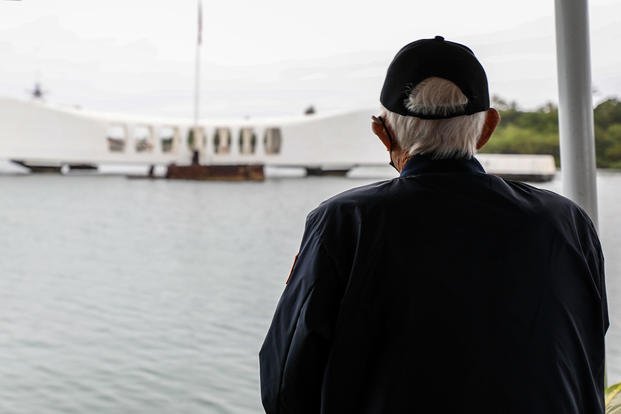
World War II
On Dec. 7, 1941, the Japanese launched an attack on Pearl Harbor naval base in Hawaii. With the devastating attack, President Franklin D. Roosevelt declares war on Japan and its allies, Germany and Italy. Five months later, after discovering Japan’s plan to invade the Solomon Islands, the U.S. intercepts the Japanese Navy.
The Battle of the Coral Sea is the first modern naval engagement in history. The Japanese succeed in this four-day battle between aircraft carriers, but the cost of this victory stopped Japan from occupying other areas of the South Pacific.
The U.S. Navy and Japanese Navy would have another engagement at the Battle of Midway one month later. The U.S. Navy codebreakers deciphered Japanese communications about planning an attack on Midway. With information about the attack, Adm. Chester Nimitz developed a plan to stop the Japanese invasion.
The three-day battle ended with the U.S. losing two ships, 145 aircraft and roughly 360 service members, and Japan losing nearly 3,000 men and five ships. The U.S. victory was a turning point for the Allies and stopped further expansion into the Pacific for Japan.
With German and Italian troops surrendering in North Africa, the Allies turned their attention to Italy. The British launched Operation Mincemeat, creating a diversion, allowing Gen. George Patton and the Allies to move into Sicily. As the Allies move to the Italian mainland, Prime Minister Benito Mussolini’s government collapses, and the new government under Pietro Badoglio begins negotiations for an armistice. On Sept. 3, the Italian government surrenders to the Allies. Even with Italy declaring war on Germany, the Allies' advances through Italy were very slow due to Britain and the U.S. moving their focus to Normandy.
On June 6, 1944, Gen. Dwight Eisenhower and the Allies launch Operation Overlord, the invasion of Normandy. The beach landing at Normandy is one of the largest amphibious assaults in history. The invasion took place on five beaches with 156,000 troops. The landing on Omaha Beach resulted in 2,400 casualties. Along with the beach landings, 13,000 paratroopers were dropping behind enemy lines to break German supply lines and secure key areas for the Allies. With the Germans being driven out of northwestern France and Paris, the Allied forces claim victory in Normandy.
Mounting his last major offensive on Dec. 16, 1944, Adolf Hitler and the German troops attempt to split the Allied forces. The Battle of the Bulge lasts for six weeks, causing more than 100,000 casualties for the U.S. Army. On Christmas Day, Allied forces began airstrikes on German positions.
With Gen. Eisenhower and Gen. Patton restoring the Allied front alongside the 101st Airborne Division, Allies claim victory of the battle on Jan. 25, 1945. As the Allies make advances from the west and the Soviet forces close in from the east, Nazi Germany surrenders on May 8, 1945, marking VE Day.
As the war unfolds in Europe, U.S. Marines make an amphibious landing at Iwo Jima on Feb. 19, 1945. The island of Iwo Jima was considered a tactical staging point for a possible invasion of mainland Japan. Just four days into the battle, Mount Suribachi is taken by U.S. Marines. Although Mount Suribachi had been taken, battles continued until March 25, 1945, when Gen. Tadamichi Kuribayashi launched his final attack. After American forces declare the capture of Iwo Jima, soldiers spent weeks searching the island for Japanese who refused to surrender.
With the capture of Iwo Jima, American Forces move their focus to the island of Okinawa. On April 1, 1945, U.S. troops land on the beaches of Okinawa with little resistance. As American troops move across Okinawa, they encounter resistance in Southern Okinawa.
Throughout the battle, both sides took heavy casualties. The Japanese took their final stand on the southern coast of Okinawa. With certain defeat coming, Gen. Mitsuru Ushijima and Gen. Isamu Cho commit suicide, ending the Battle of Okinawa on June 22.
Capturing the island of Okinawa gave the Allied forces a tactical point to launch attacks on the Japanese mainland. Wanting to end the war, President Harry Truman dropped the first atomic bomb on Hiroshima on Aug. 6, 1945, with a second bomb being dropped on Nagasaki three days later. World War II ended with the surrender of Emperor Hirohito and Japan on Aug. 14, 1945. On Sept. 2, 1945, Japan signed its formal surrender, marking VJ Day and the official end of the war.
Throughout World War II, there would be 473 Medal of Honor recipients and just more than one million Purple Hearts awarded.
Important Figures and Events of WWII
- Attack on Pearl Harbor: The Japanese Navy Air Service launched a surprise attack on Pearl Harbor, prompting the U.S. to declare war on Japan and its allies.
- Adm. Chester Nimitz: Commander of the U.S. Pacific Fleet.
- Battle of Midway: A key turning point in the war, stopping Japanese forces from further expansion into the Pacific.
- Gen. George Patton: Commander of the U.S. Seventh Army during the invasion of Sicily.
- Gen. Dwight Eisenhower: Commander of the Allied forces leading the invasion of Normandy. Eisenhower would become the 34th president.
- Tuskegee Airmen: The first Black aviation unit. The Tuskegee Airmen played a critical role, flying more than 15,000 missions in World War II.
- Invasion of Normandy: The landing on the beaches of Normandy was the largest amphibious assault in history.
- VE Day: The official end of WWII in Europe on May 8, 1945.
- Battle of Iwo Jima: The U.S. Navy and Marines take Midway as a strategic area to launch attacks on the mainland of Japan.
- Mount Suribachi: Site of the famed U.S. Marine flag raising on Feb. 23, 1945.
- President Harry Truman: The 33rd president, Truman ordered the use of the atomic bombs on Japan, ending WWII.
- Hiroshima and Nagasaki: The cities where the first atomic bombs were dropped, ending WWII.
- VJ Day: The official end of WWII in Japan on Aug. 15, 1945
The Cold War
World War II has ended, and by 1948, tensions between the U.S. and Soviet Union begin to build. In June 1950, with support from the Soviets, North Korea invades South Korea, leading to the start of the Korean War. The United States, thinking this was the start of communism spreading across the world, intervene. America used a containment strategy for dealing with the Soviet Union -- be patient and watch Russia to prevent its expansion of communism.
The U.S. strategy of containment set the stage for a deadly arms race with the Soviets. As the United States was developing more atomic weapons, the Soviets also were testing their own. Both countries continued developing increasingly destructive weapons, eventually leading to the development of the hydrogen bomb.
Not only did the Cold War take place on Earth, but it gave way to the space race. With the Soviets launching Sputnik, the U.S. launched its first satellite, Explorer I, in 1958. The same year, President Dwight Eisenhower created the National Aeronautics and Space Administration, or NASA.
The space race pushed the U.S. into launching manned space missions. The first American in space was Alan Shepard, shortly followed by the Apollo 11 mission putting Neil Armstrong on the moon. The U.S. effectively won the space race with those first steps on the moon.
Tensions between the countries calmed when Richard Nixon took office. Nixon looked to use diplomacy instead of the U.S. military to solve the issues. This approach led to the Strategic Arms Limitation Treaty (SALT) which was a first step in reducing the nuclear arsenal. Even with Nixon’s efforts, the tensions rose again with President Ronald Reagan taking office. Reagan’s policies led to more conflict in Central America.
Tensions began to ease once again when Mikhail Gorbachev took office in 1985. With his new policies, Russia looked toward a new relationship of political openness with the rest of the world. In November 1989, the Berlin Wall was destroyed, and the Soviet Union fell apart in 1991, ending the Cold War.
The Korean War
At the start of the Cold War, the U.S. intervenes when Soviet-supported North Korea tries to invade the south. With the North Korean army pushing farther into the south, General Douglas MacArthur launches an amphibious assault on Inchon. The assault on the west coast of Korea leads to recapturing the South Korean capital of Seoul.
After disobeying presidential orders, MacArthur was relieved of his command. He was replaced by Gen. Matthew Ridgway, who held off the Communist north while peace negotiations dragged on. When President Dwight Eisenhower taking office, negotiations continued until 1953 when a peace treaty was signed, ending the Korean War.
Throughout the Korean War, there would be 146 Medal of Honor recipients and more than 118,000 Purple Hearts awarded.
Important Figures and Events of the Korean War
- Inchon Landing: Led by Gen. MacArthur, U.S. and South Korean forces land at the port of Inchon, forcing the North Korean army to retreat up the Korean peninsula.
- Operation Ripper: The fourth and final Battle of Seoul. The battle began with the largest artillery strike of the war. The capital of Seoul was liberated on March 14, 1951.
- Battle of Heartbreak Ridge: A monthlong battle with a massive amount of artillery and airstrikes.
- Gen. Douglas MacArthur: Led the United Nations forces during the Korean War.
- Gen. Matthew Ridgway: Replaced MacArthur and took command of the forces in Korea.

Vietnam War
After the French defeat at Dien Bien Phu, Vietnam claims its independence at a peace conference in Geneva. At this point, Vietnam is divided into the Communist North and the anti-Communist South. By 1958, the Viet Cong began using guerrilla tactics in the South.
The U.S. involvement is limited until August 1964 when North Vietnamese boats attacked the USS Maddox in the Gulf of Tonkin. President Lyndon Johnson sends in airstrikes, which end in US pilot Everett Alvarez Jr. becoming a POW. The Gulf of Tonkin Resolution is passed by Congress, allowing the president to use all measures.
In March of 1965, U.S. troops enter Vietnam. Operation Rolling Thunder begins the continuous bombing of North Vietnam and the Ho Chi Minh Trail. Over the next year, the U.S. continues to increase the number of troops in the region. After many battles, the North Vietnamese Army and Viet Minh begin the Tet Offensive in January 1968. Attacks are launched in cities across South Vietnam, including Saigon and the invasion of the US Embassy. The Tet Offensive marks the turning point in the war and begins the gradual withdrawal of U.S. troops from Vietnam.
After taking backlash about the war, Johnson withdraws from the election. With promises of ending the draft and restoring peace, Richard Nixon takes the presidency in November 1968. As Nixon takes office, the U.S. pushes for Vietnamization, giving South Vietnam more responsibility in the war.
In January 1973, U.S. troops withdrew from Vietnam and POWs were released when an agreement was reached, effectively ending the war for the U.S. The end of the war came in April 1975 in Saigon, when South Vietnam surrendered to the North.
Throughout the Vietnam War, there would be 261 Medal of Honor recipients and more than 351,000 Purple Hearts awarded.
Important Figures and Events of the Vietnam War
- Ho Chi Minh: The Communist leader of North Vietnam.
- Ngo Dinh Diem: The U.S.-backed leader of South Vietnam.
- Ho Chi Minh Trail: North Vietnam supply routes that supplied supporters and guerrillas in South Vietnam.
- Operation Ranch Hand: U.S. aircraft spray Agent Orange across South Vietnam in attempts to remove any food or cover for North Vietnamese guerrillas.
- Gulf of Tonkin: North Vietnam boats attack the USS Maddox.
- Operation Rolling Thunder: President Lyndon Johnson's campaign of sustained bombing of North Vietnam.
- Operation Starlite: The first U.S. ground offensive where Marines engage with the Viet Cong.
- Battle of Ia Drang: The U.S. Army inserted troops by helicopter to battle the North Vietnamese Army.
- Battle of Khe Sanh: A 77-day attack on US Marines at the base in Khe Sanh. Operation Pegasus put an end to the battle.
- Tet Offensive: North Vietnamese Army and Viet Minh carry out attacks on South Vietnam. This was a turning point in the war and began the withdrawal of U.S. troops.
- Hamburger Hill: The battle at Ap Bia Mountain, U.S. troops stop North Vietnamese forces from moving into Laos.
- Paris Peace Accord: Signed by President Richard Nixon, ending U.S. involvement in Vietnam.
- Fall of Saigon: The North Vietnamese Army takes the south capital of Saigon on April 30, 1975, ending the war.
The Gulf War
In August 1990, Saddam Hussein and Iraqi forces push to invade Kuwait. Defying the UN, Hussein prompts President George H.W. Bush to launch Operation Desert Storm on Jan. 17, 1991. The coalition employed new military technology in its swift-moving offensive against Iraqi forces. On Feb. 24, coalition forces began Operation Desert Sabre. U.S. and coalition forces took back Kuwait and defeated Iraqi forces. A ceasefire was declared on Feb. 28, 1991, ending the Gulf War.
Throughout the Gulf War, there were 607 Purple Hearts awarded.
Important Events of the Gulf War
- Operation Desert Sabre: A ground offensive by coalition forces to recapture Kuwait.
- Battle for Jalibah Airfield: U.S. 2nd Brigade, 24th Infantry Division captured the Jalibah Air Base.
- Battle of Medina Ridge: A two-hour tank battle outside Basra, Iraq, between the U.S. 1st Armored Division and the Iraqi Republican Guard. This is the largest tank battle in US history.
The War on Terror
The events of Sept. 11, 2001, sends shockwaves across the United States. After the attacks on the World Trade Center in New York and the Pentagon, President George W. Bush announces the War on Terror in an address to the nation. Nations across the globe join in the campaign to combat terrorism. The first target in the War on Terror would be Osama bin Laden and al-Qaida in Afghanistan.
The War In Afghanistan
Operation Enduring Freedom begins on Oct. 7, 2001, with U.S. and British airstrikes on al-Qaida and the Taliban. Special forces begin striking targets around the country. With sustained airstrikes and ground forces attacking key areas, Mazar-e-Sharif, Kabul and Kandahar are taken by the U.S. and coalition forces. As the Taliban is pushed from these key areas of Afghanistan, the first elected president, Hamid Karzai, takes office.
On May 2, 2011, Operation Neptune Spear begins. In the early morning hours, Black Hawks leave Afghanistan bound for Abbottabad, Pakistan. The target is Osama bin Laden. Navy SEALs land at the Abbottabad compound to carry out this mission. As the SEALs move through the compound, they locate and kill bin Laden on the third floor. SEALs also discover valuable intelligence in the compound. The 40-minute operation carried out by SEAL Team Six was a success.
After the U.S. mission killing bin Laden, NATO began withdrawing troops, ending their combat operations in December 2014. The U.S. and Afghan governments now looked for a diplomatic end to the conflict.
In February 2020, the U.S. and Taliban reached an agreement and signed a peace deal. This agreement required the U.S. to leave Afghanistan within 14 months. As the U.S. begins withdrawing troops, the Taliban quickly start taking areas of the country and regaining rule of Afghanistan.
The last US troops departed Kabul on Aug. 30, 2021 ending nearly 20 years in Afghanistan and America's longest war. Throughout the war in Afghanistan, there have been 25 Medal of Honor recipients and more than 12,500 Purple Hearts awarded.
Important Events of the War in Afghanistan
- Battle of Tora Bora: A mission launched by the U.S. in the mountains of eastern Afghanistan to capture al-Qaida leader Osama bin Laden.
- Operation Anaconda: A military operation to destroy Taliban and al-Qaida forces in the Shahi-Kot Valley and Arma Mountains. This was the first major military battle since Tora Bora.
- Operation Red Wings: An operation launched to disrupt Taliban and anti-coalition militias to regain stability in the region for the National Assembly of Afghanistan elections.
The Iraq War
With intelligence suggesting Saddam Hussein was developing weapons of mass destruction, the U.S. and coalition forces move into Iraq. Within three weeks, coalition forces capture the major cities and President George W. Bush ends combat operations in May 2003. There is a continued guerrilla war for years after declaring military victory.
In December 2003 in Iraq, Saddam Hussein is found hiding in a hole in ad-Dawr. Without resisting, Saddam is arrested by U.S. soldiers. In November 2006, Saddam is found guilty of crimes against humanity. He is executed on Dec. 30, 2006. In December 2011, the U.S. declares an end to the war in Iraq.
Throughout the war in Iraq, there have been six Medal of Honor recipients and more than 35,000 Purple Hearts awarded.
Important Events of the War in Iraq
- Mosul Raid: A U.S. military operation that led to the death of Uday and Qusay Hussein, the sons of Saddam Hussein.
- Battle of Baghdad: U.S. and coalition forces take the capital of Baghdad and declare victory.
- Battle of Fallujah: The first battle of Fallujah was aimed to capture or kill militants who killed and mutilated U.S. contractors.
Want to Learn More About Military Life?
Whether you're thinking of joining the military, looking for post-military careers or keeping up with military life and benefits, Military.com has you covered. Subscribe to Military.com to have military news, updates and resources delivered directly to your inbox.

